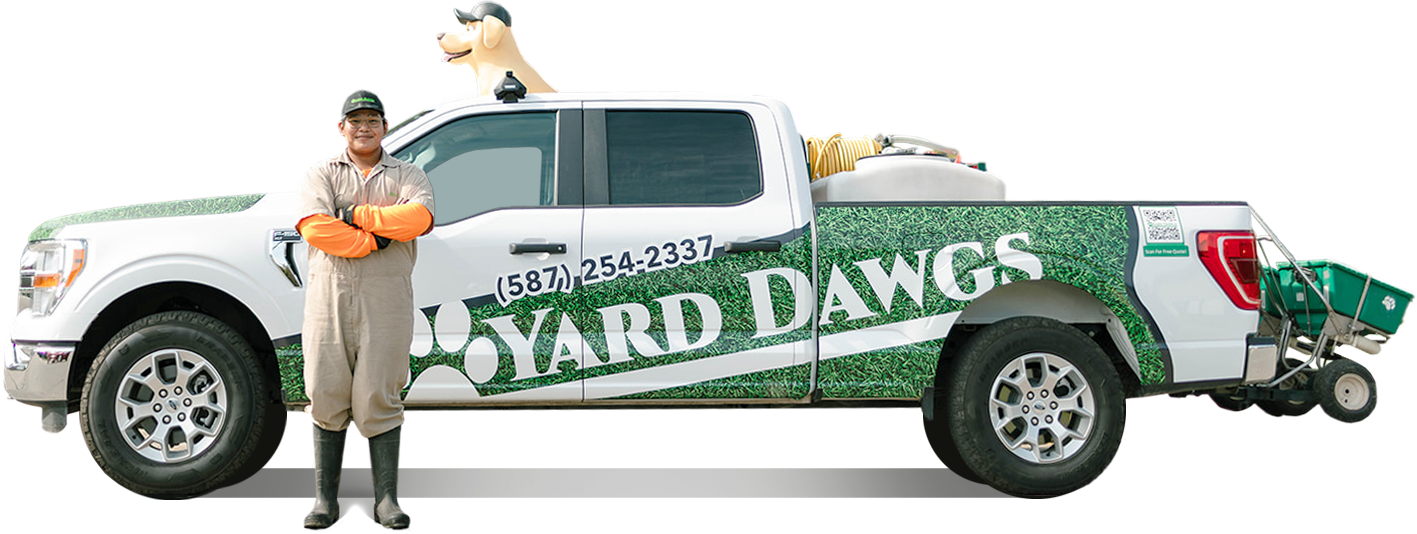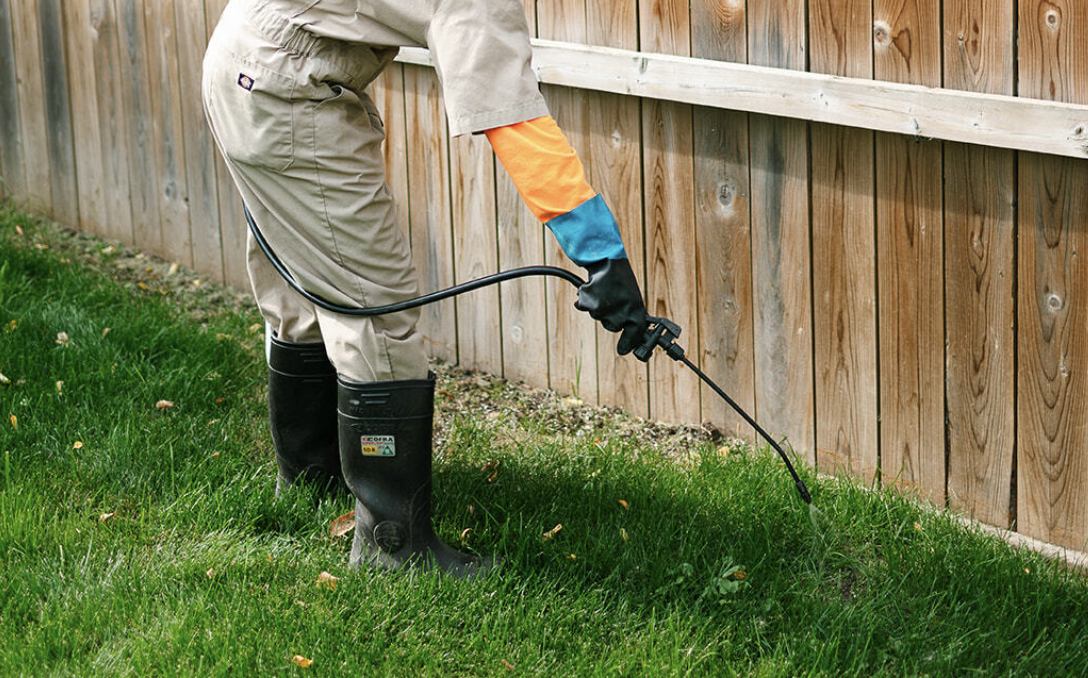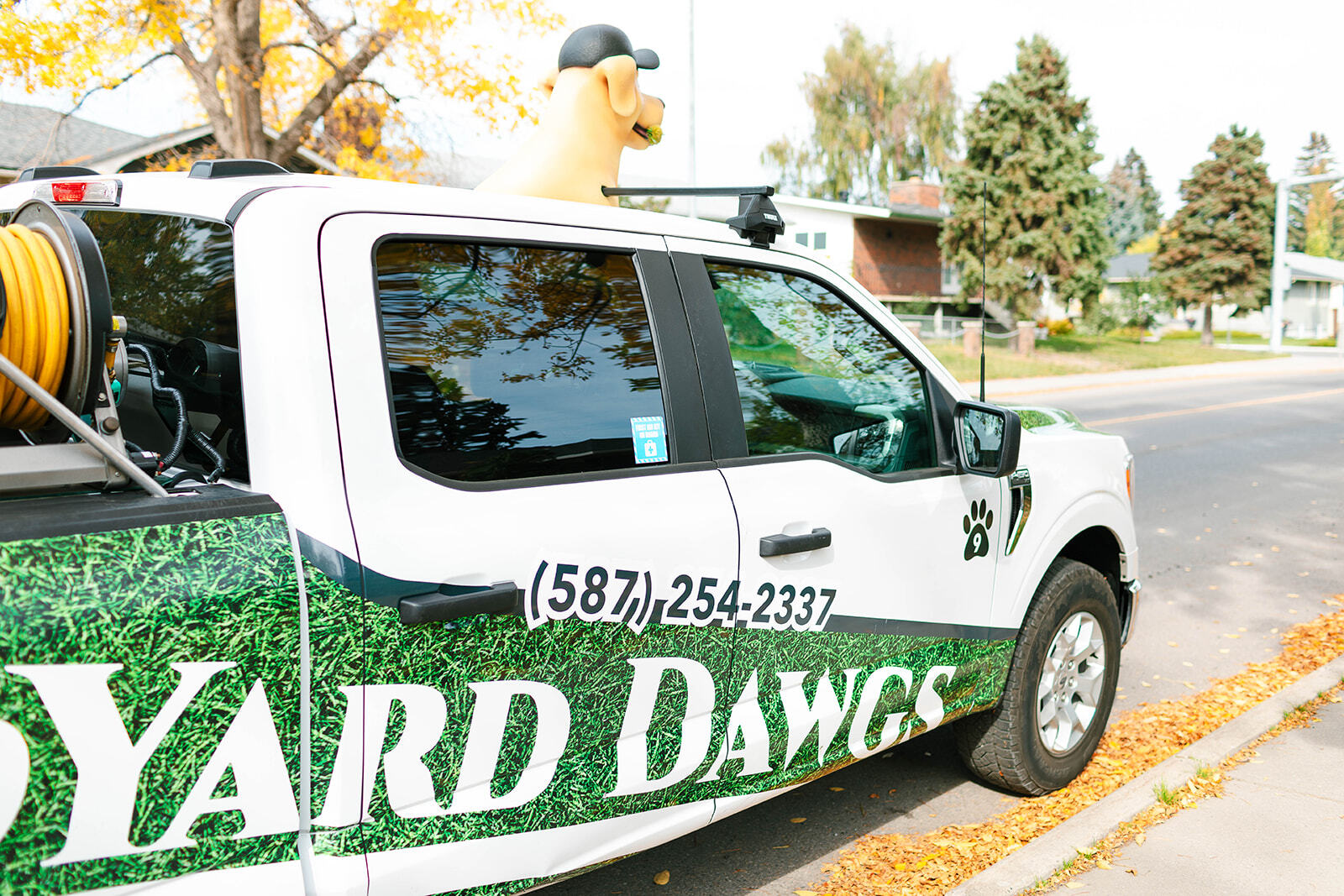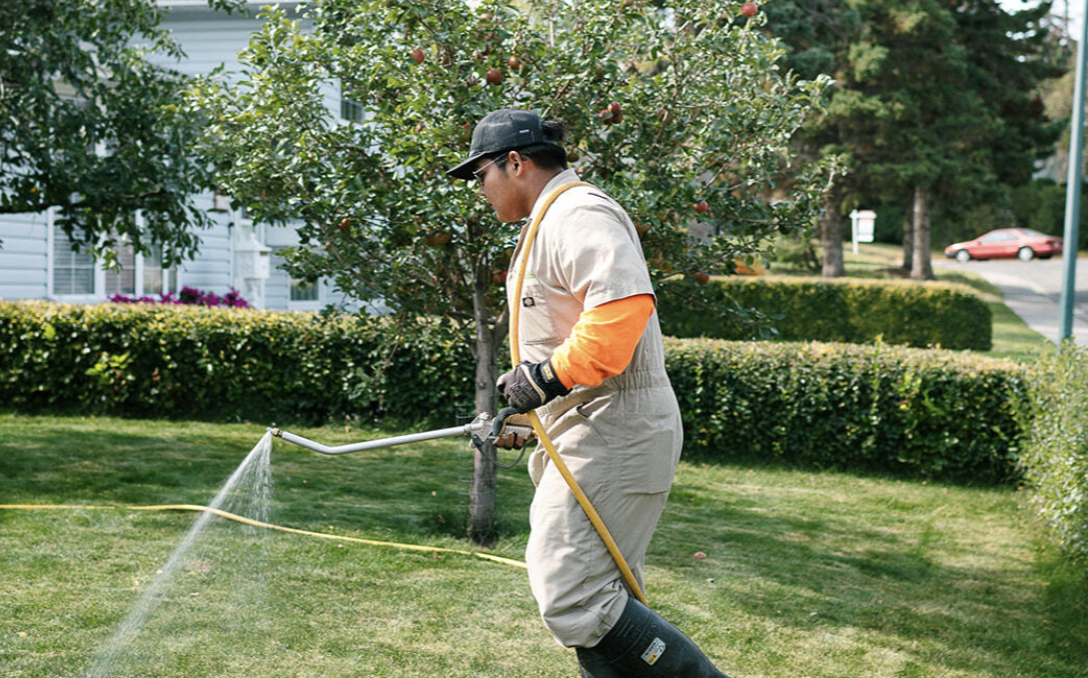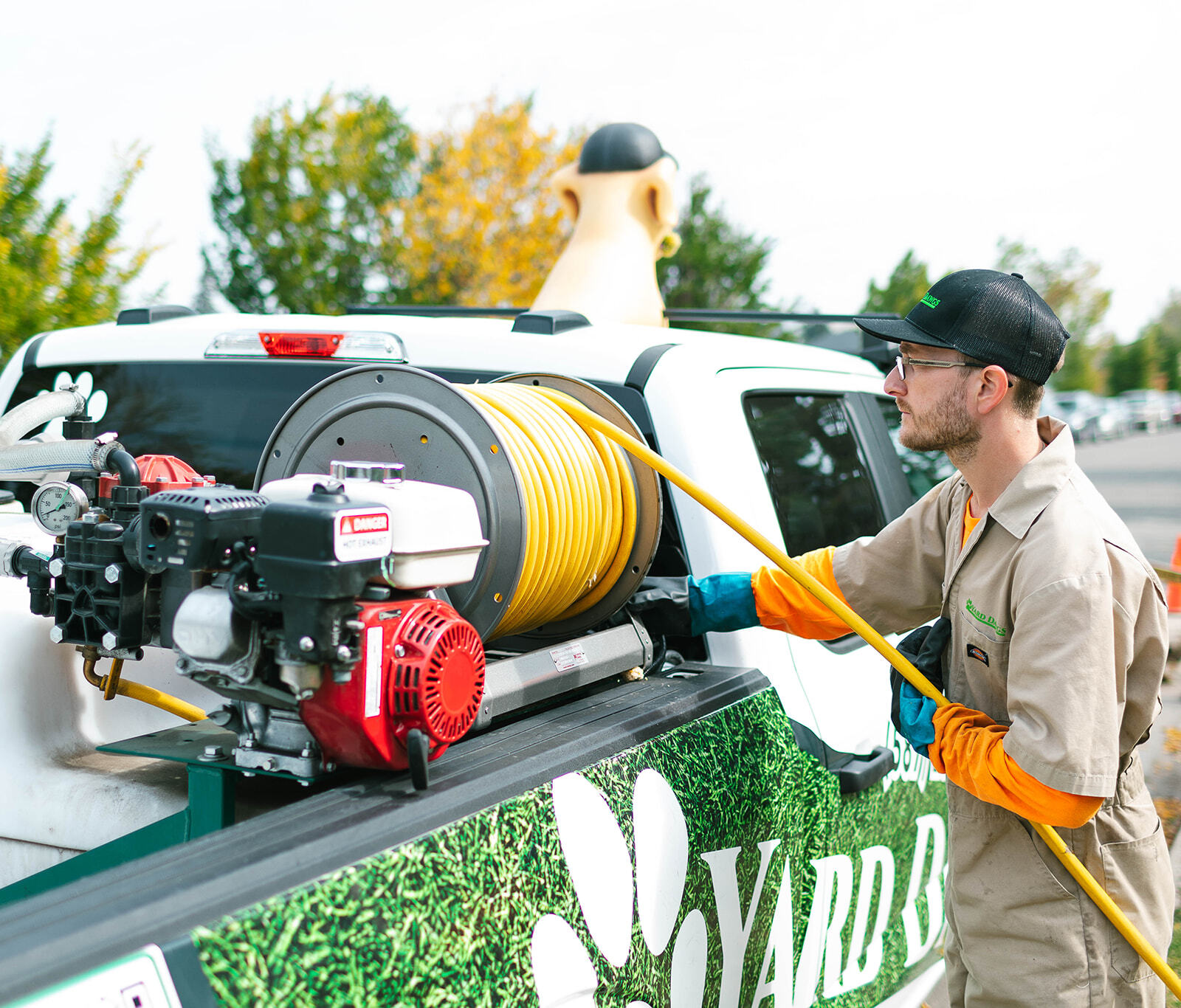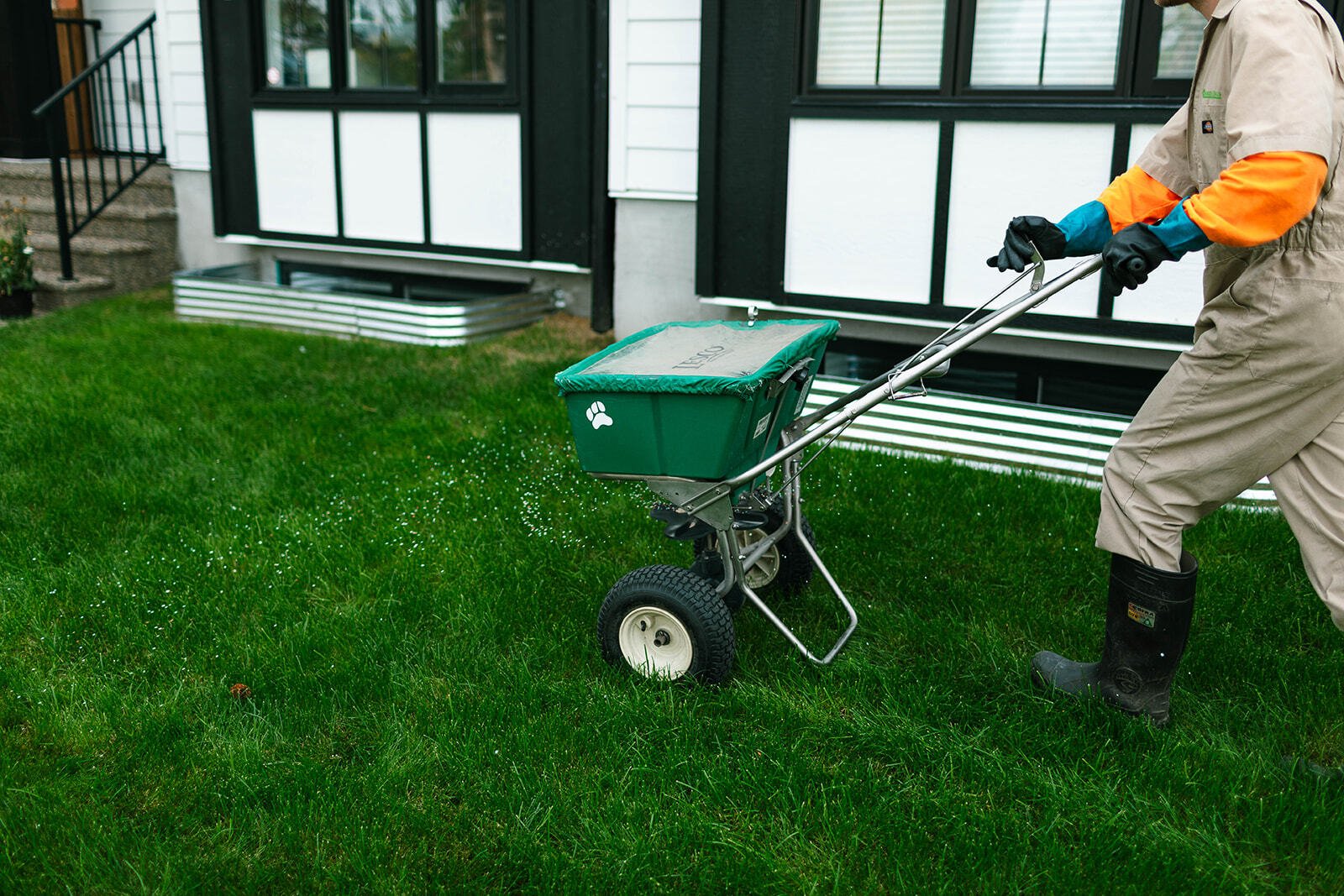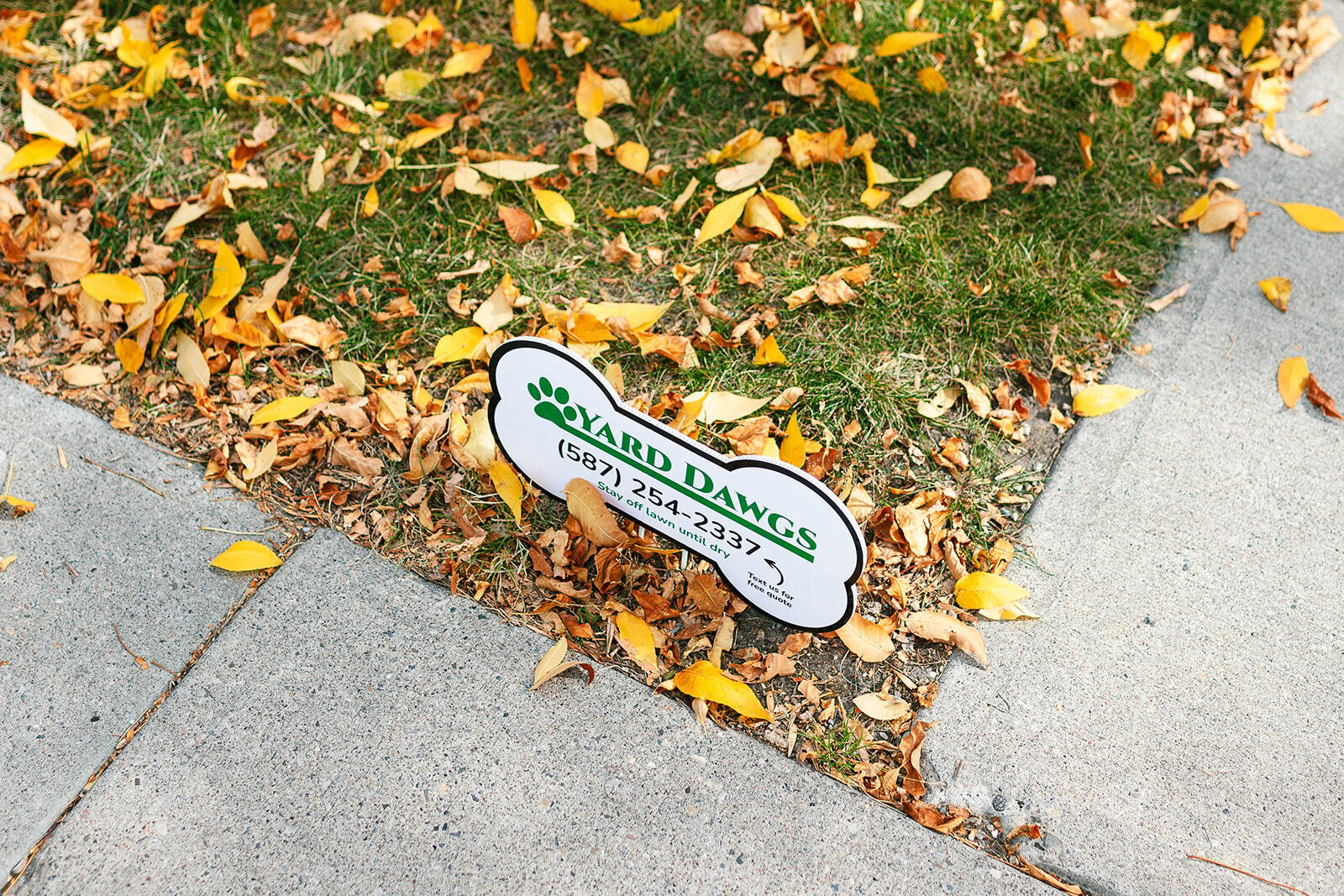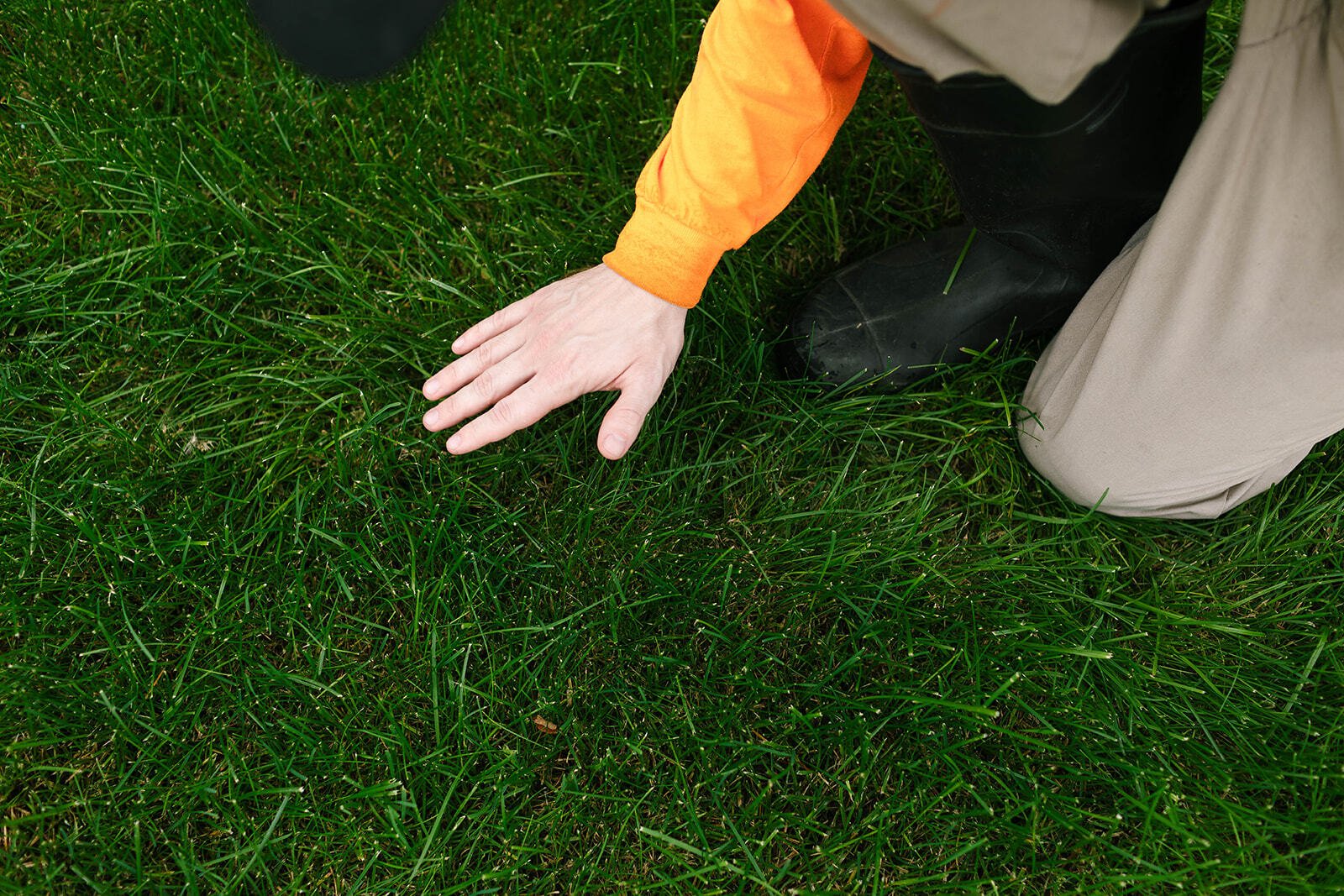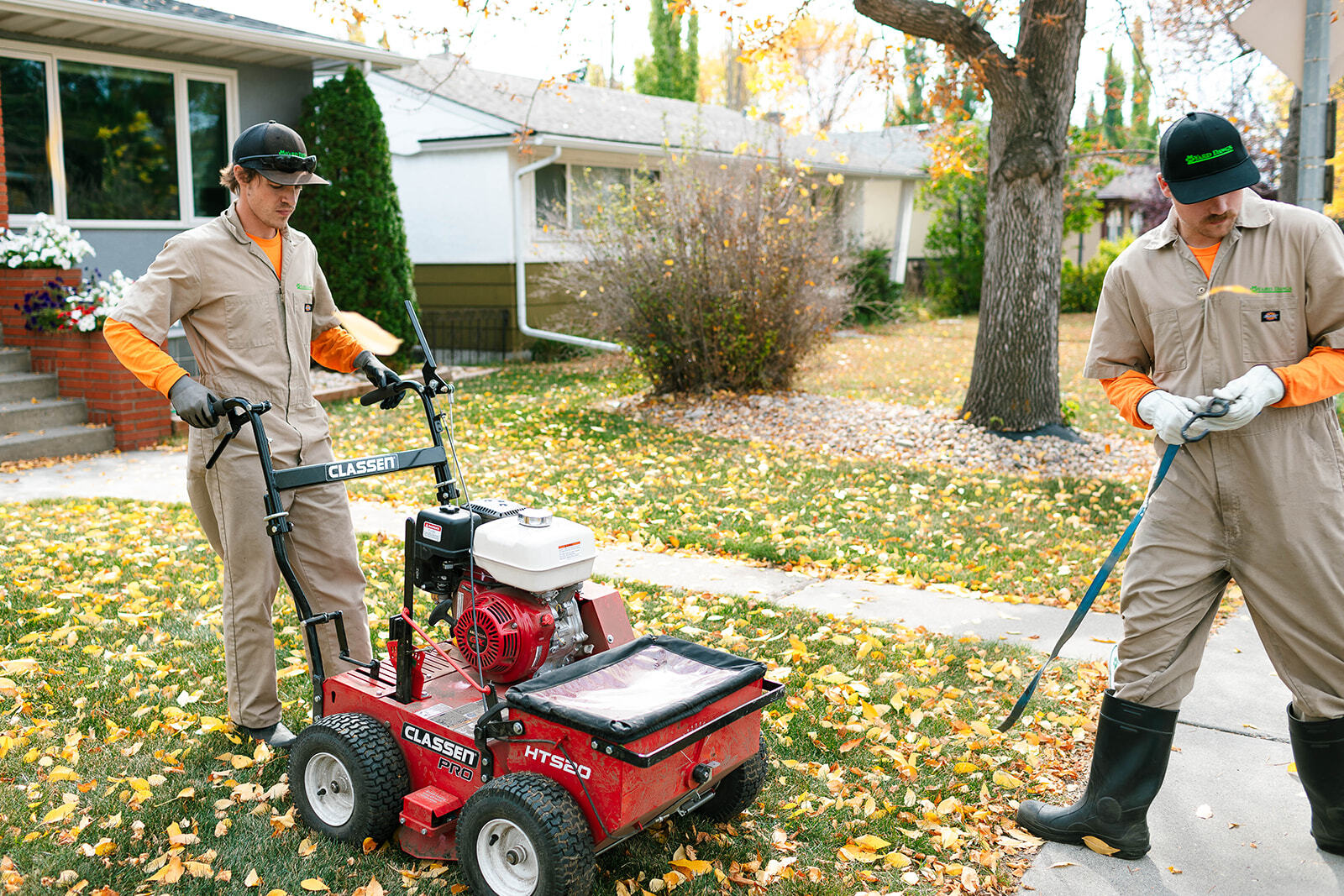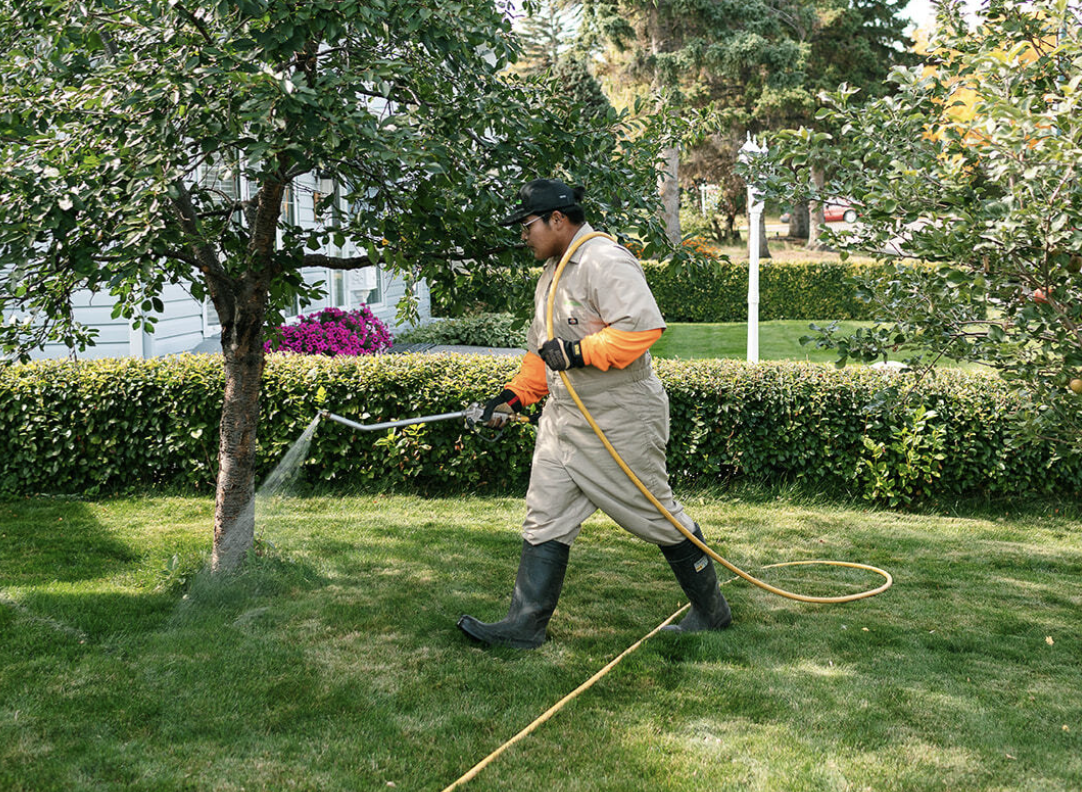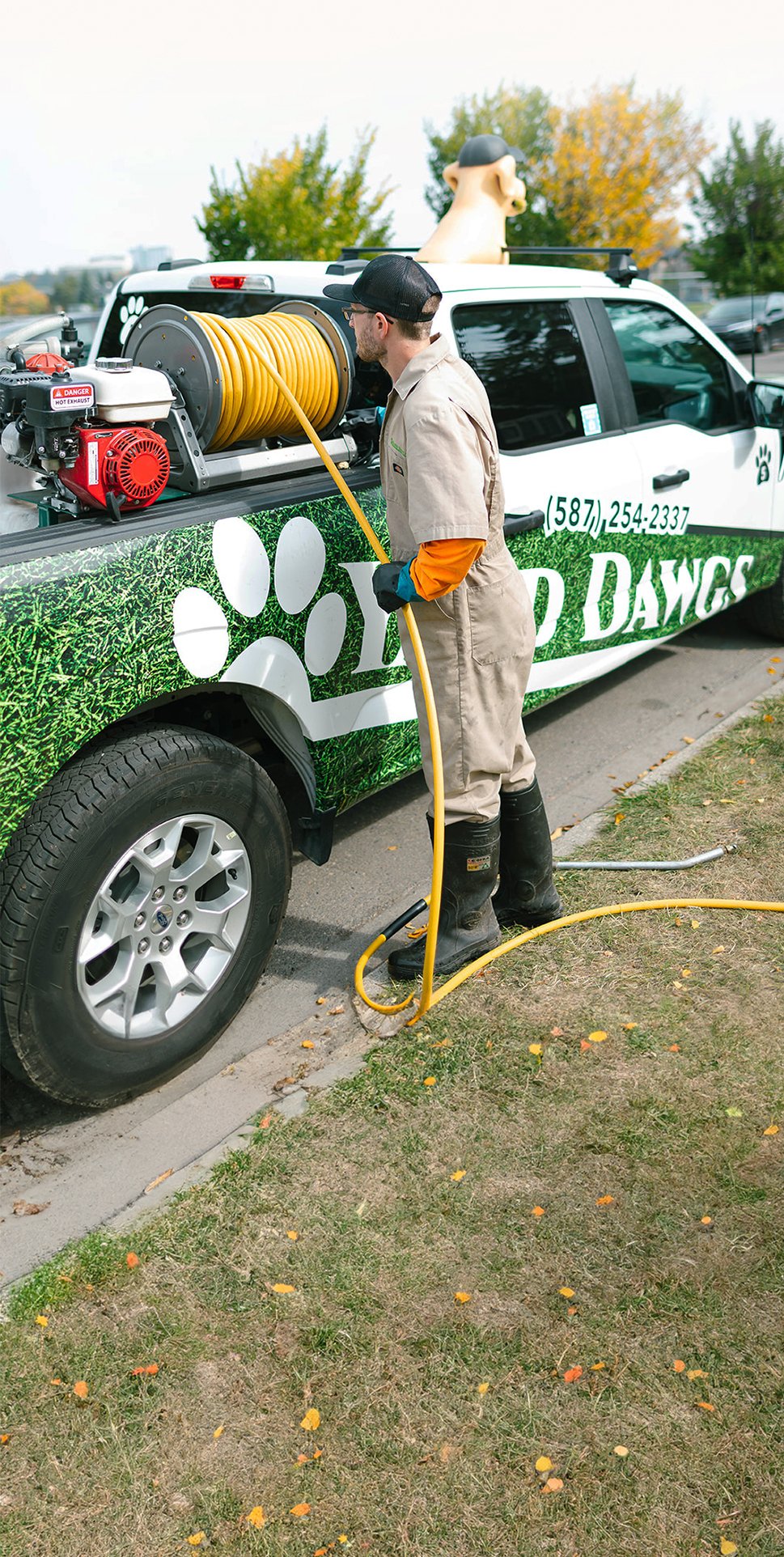Dandelions, clover, and plantain weeds can spread aggressively if not managed early in the season. At the same time, your lawn needs a steady supply of nitrogen and other nutrients to recover from winter and stay green throughout summer. Weed and feed fertilizer offers a convenient way to tackle both problems. But only if used correctly.
Applying it too early, too late, or in the wrong conditions can waste product and damage your grass. Here’s what every lawn owner in Calgary, Edmonton, Red Deer, and Saskatoon should know about using weed and feed effectively. Plus, you’ll read some smarter alternatives from our experts depending on your lawn’s condition.

What Is Weed and Feed Lawn Fertilizer?
Weed and feed lawn fertilizer is a two-in-one product that combines herbicide and fertilizer. It targets broadleaf weeds while nourishing your grass with essential nutrients like nitrogen. It sounds convenient, and it is, but it's important to use it properly. Poor timing or application can do more harm than good.
Best Time to Apply Weed and Feed
Spring and fall are the optimal windows for applying weed and feed lawn fertilizer, but it depends on what type you’re using. The main thing to remember is to never apply weed and feed during a heatwave or dry spell. It can stress your lawn and reduce the product’s effectiveness.
Early Spring
In early spring, use a post-emergent weed and feed once weeds have appeared but are still young and actively growing. This allows the herbicide to penetrate the foliage effectively, while the fertilizer helps your lawn green up after winter.
Early Fall
In early fall, if your spring application didn’t completely knock out the weeds, a second treatment can be helpful. But never apply more than twice a year. Make space applications at least 6-8 weeks apart.
Is Weed and Feed Right for Your Lawn?
Weed and feed is effective, but not always necessary. If your lawn is healthy and you’re dealing with only a few stubborn weeds, targeted weed control treatments may be a better option. Similarly, if your grass is nutrient-deficient but weed-free, you’re better off with straight lawn fertilization services rather than a combo product.
Weed and feed also isn't suitable for newly seeded lawns. If you've recently used slit-seeding, hold off until you've mowed the new grass at least twice.
Pros and Cons of Weed and Feed
Pros:
- Saves time by combining two tasks in one
- Promotes greener, thicker grass
- Targets common broadleaf weeds like dandelions and clover
Cons:
- Timing must be perfect for full effectiveness
- Can stress grass in hot or dry weather
- Not ideal for new lawns or fine-tuning treatments
How to Apply Weed and Feed Properly
Here’s how to get the best results from weed and feed lawn fertilizer:
- Mow your lawn 2-3 days before application. This gives weeds time to regrow enough surface area for the herbicide to stick.
- Apply to a slightly damp lawn. Dew or light watering beforehand helps the granules adhere to the weed leaves.
- Use a spreader for even coverage. A broadcast spreader is great for large lawns, but switch to a drop spreader near garden beds or patios.
- Wait before watering. Don’t water your lawn for at least 24-48 hours after application to allow the herbicide to absorb.
- Keep kids and pets off the lawn until the granules have dissolved after watering or rain.
Alternatives to Traditional Weed and Feed
At Yard Dawgs, we take a specific approach to every lawn we treat. That means offering a suite of effective alternatives to weed and feed:
Weed control: Our spray treatments eliminate existing weeds quickly and safely, with a weed-free guarantee.
Lawn fertilizer: We apply nutrient-rich blends throughout the season to feed your lawn exactly what it needs.
Super Juice & Sea Kelp: Natural growth enhancers for color, root development, and stress resistance.
Hardscape weed control: Targeted treatment for weeds between pavers, along driveways, or patios.
Liquid and mechanical aeration: Improve soil structure and nutrient absorption to support healthier, denser turf.
Chinch bug control: Protect your lawn from destructive pests that often mimic drought damage.
Timing by Season
Here’s a seasonal breakdown for when weed and feed may (or may not) be a good idea:
Early Spring (April – May):
- Best time for post-emergent weed and feed
- Kickstart lawn growth
- Avoid if you’ve just overseeded
Mid-Summer (June – July):
- Avoid applying weed and feed
- Focus on spot weed control and watering
Early Fall (September):
- Second weed and feed application if needed
- Great time for lawn recovery and fertilization
- Don’t apply too late: cool soil reduces product effectiveness
Let’s Get Your Lawn Thriving
Explore our Lawn Fertilization Services, weed control, aeration options, and more. Then, leave the rest to us. If you’re not sure whether weed and feed is the right fit or when to apply it, our support team can help build a lawn care plan for your property. We assign the same crew to your lawn throughout the season, so they understand its unique needs and can make adjustments as your lawn evolves.


